介绍

Obviously, they are the same size LED屏幕, but one is quoted at 30,000 yuan, while the other is 90,000 yuan?
Are you really being “cheated”? In fact, the factors that affect the price of LED screens are never as simple as “size”.
What you see is a similar appearance, but what you don’t see is the huge difference in configuration. This article will help you to dismantle the price difference code behind this and see where every penny is spent.
目录
1. Appearance and misunderstanding of the price differences of LED screens
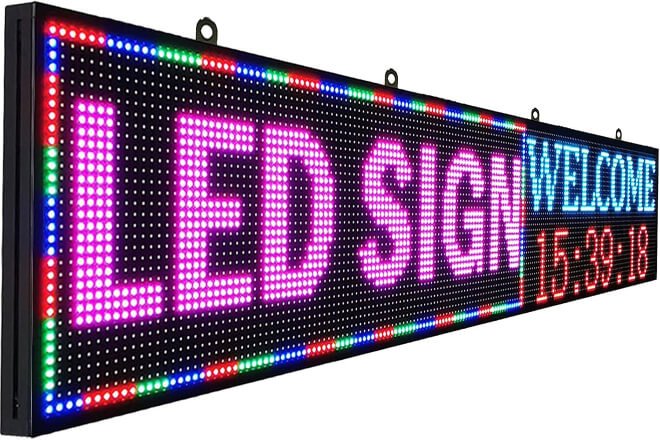
When buying LED screens, many people will wonder: Why are the prices so different when they look similar in size? Have they been cheated by merchants?
In fact, the price difference is not that the merchants deliberately raise the price, but there are many differences in details and configurations.
First of all, the core of LED screens is the lamp beads. The prices of lamp beads of different brands and models vary greatly.
For example, the lamp beads of big brands such as Nationstar and Jingtai have more stable quality and better display effects, so the price is naturally higher.
In addition, the smaller the distance between the lamp beads, the clearer the picture, but the higher the cost.
Secondly, the driver IC is also critical. A good driver IC can make the screen run stably for a long time without flickering or screen distortion, while a cheap driver IC may have problems after a long time of use, affecting the viewing effect.
Furthermore, the hardware configuration of the LED screen, such as the cabinet material, heat dissipation design, and 电源 brand, will also affect the price.
For example, a die-cast aluminum cabinet is lighter and has better heat dissipation than an iron cabinet, but the cost is also higher.
A good power supply can ensure the stable operation of the screen and avoid a sudden black screen or damage.
In addition, the complexity of the software system and control system will also affect the price. Some high-end LED screens support functions such as multi-signal input
Remote control, and intelligent 亮度 adjustment. The addition of these technologies will also increase costs.
Finally, after-sales service is also an important factor in price differences. To provide long-term quality assurance and fast-response after-sales service.
Merchants need to invest more manpower and resources, and this part of the cost will also be reflected in the selling price.
Therefore, the price difference of LED screens is not a deliberate price increase by merchants, but a comprehensive reflection of many factors such as technology, configuration, and service.
When buying an LED screen, don’t just look at the size. Learn more about the specific configuration and performance of the product to buy a product that is truly suitable for you.
Reason 1: The influence of lamp bead type and brand
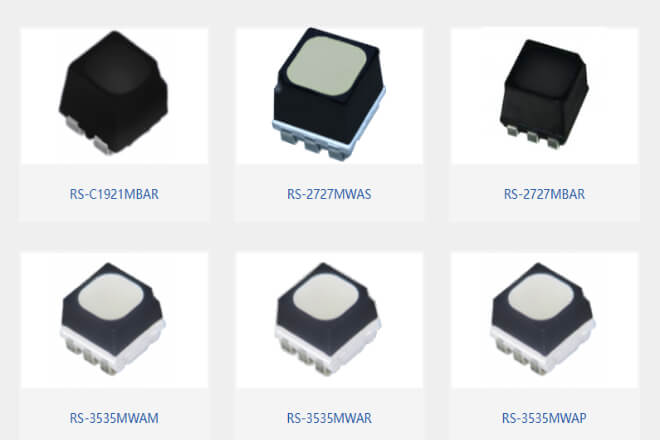
The core light-emitting unit of the LED display is the lamp bead. Although it is small in size, the cost is not small, usually accounting for more than 40% of the cost of the entire screen.
In other words, the quality of the lamp bead directly determines the price and quality of the LED screen.
At present, the lamp bead brands on the market are mainly divided into two categories:
One is internationally renowned brands, such as Japan’s Nichia and China’s Nationstar.
The lamp beads of these large manufacturers have stable quality, high luminous brightness, good color consistency, and long service life. Of course, the price is relatively high.
The other category is some unbranded or low-end brand lamp beads, which are much cheaper, but the quality is uneven.
And it is easy to have problems such as uneven brightness, color deviation, and short life.
You may not see obvious differences when you first use it, but the problems will gradually be exposed after a long time.
Specifically:
1). Consistency:
The quality of the lamp beads of big brands is strictly controlled during the production process to ensure that the brightness and color of each lamp bead are basically the same, and the display effect of the whole screen is more uniform.
While low-end lamp beads are prone to “flower screen” phenomenon, affecting the viewing experience.
2). Lifespan:
The service life of high-quality lamp beads can usually reach more than 100,000 hours, while low-end lamp beads may start to have problems, such as dead lights and dim lights, after two or three years.
3). Luminous 亮度:
International brand lamp beads have higher brightness and can display clearly even in strong outdoor light environments.
While low-end lamp beads are insufficient in brightness, and the outdoor use effect is greatly reduced.
Therefore, the choice of lamp bead brand and type directly determines the quality and price of the LED screen.
When consumers buy, don’t just look at the screen size, but also pay attention to the brand and quality of the lamp beads, so that they can buy products that are truly worth the money.
Reason 2: The cabinet structure and material determine the "hard power."
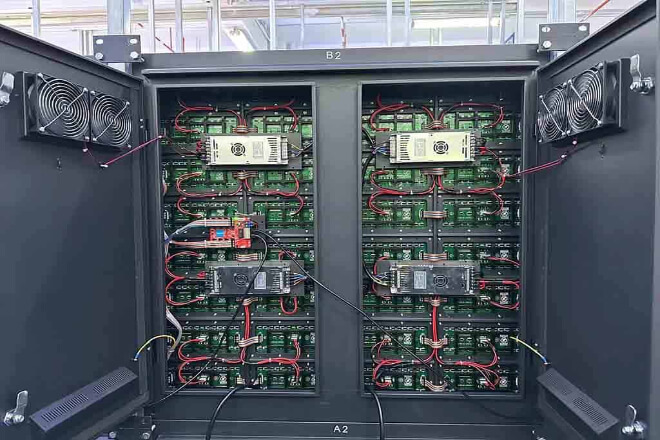
Let’s talk about the die-cast aluminum cabinet first. The material used for this cabinet is aluminum alloy, and the cabinet is made of light and strong.
The heat dissipation is particularly good, the lamp beads are not easy to heat up when used, and the life span is naturally long.
Moreover, the gap between the splices is very small, and the screen looks particularly flat. The waterproof and dustproof capabilities are also good, and it is not afraid of wind and rain when used outdoors.
Although the price will be a little higher when you buy it at the beginning, it is worry-free to use and has a long life. It is actually very cost-effective.
Let’s take a look at the iron box. This kind of box is heavier, difficult to move, and inconvenient to install.
The heat dissipation is average, and the lamp beads are prone to heating up after a long time of use, and the life span is short.
The waterproof and rust-proof capabilities are not good, and it is easy to rust when used outdoors.
However, the advantages of the iron box are that it is strong and has high structural strength, which is suitable for indoor scenes that do not require high flatness.
Finally, there is the module bare board, that is, the one without a box. This is the cheapest, but the lamp beads and circuit boards are directly exposed to the outside and are easily damaged.
The heat dissipation is poor, the waterproof and dustproof capabilities are almost zero, and there are a lot of problems after long-term use. It is suitable for temporary use, but the maintenance cost will be very high if used for a long time.
Reason 3: Difference in the level of power supply and control system
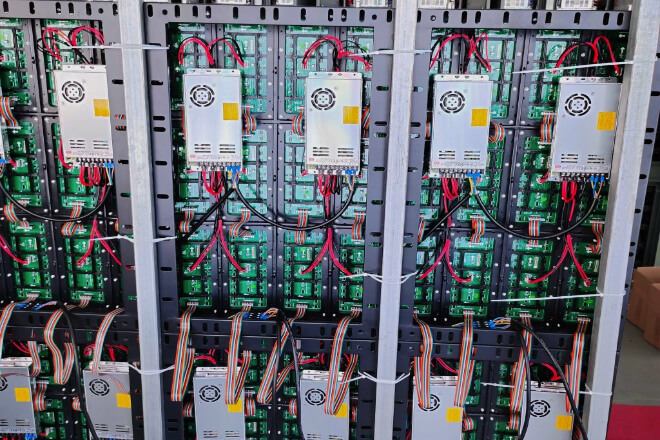
1). 电源:
For LED screens, the power supply is like refueling a car. Good oil can make the car run steadily, while bad oil may directly cause your car to break down.
The power supplies of brands such as Mean Well, Chuanglian, and Huntkey are of reliable quality and stable output, which makes you feel at ease when using them.
For example, Mean Well’s power supply has good heat dissipation, will not heat up after long-term use, and has a long life.
But those unbranded “three-no” power supplies have uneven quality and unstable voltage output.
After long-term use, the lamp beads are prone to flickering, or even being directly scraped, and the maintenance cost goes up all of a sudden.
2). Receiving the card and the main control card:
The receiving card and main control card are like the “brain” of the screen, which determines whether the picture can be good-looking.
Good receiving cards, such as Colorite, have clear pictures and bright colors, just like high-definition TVs, which are comfortable to watch.
And some cheap receiving cards may have blurred pictures, distorted colors, or even tearing, which makes people shake their heads when they see them.
The same is true for the main control card. The high-end main control card supports multiple signal inputs, such as HDMI, VGA, and DP, and can flexibly respond to various needs.
Moreover, it can also ensure the synchronization of the picture, and there will be no picture delay or asynchrony.
The low-end main control card may only support one signal input, with a single function, which is very inconvenient to use.
3). Control system:
The function of the control system is also very important. The high-end control system supports synchronous and asynchronous switching, which means that even if the network is interrupted or the computer has problems.
The LED screen will not be black, and the picture will automatically switch to the standby mode and continue to play. This is a life-saving function for some important commercial displays or monitoring scenes.
Moreover, the remote management function is also very convenient. You can use your mobile phone or computer to control the screen anytime and anywhere.
Adjust the brightness, switch the screen, and update the content. It is very flexible to use.
In contrast, the low-end control system may only be operated locally, with a single function, which is very inconvenient to use.
Once a problem occurs, it has to be solved on site, which is time-consuming and laborious.
In short, although the power supply and control system look inconspicuous, their quality and function directly determine the stability and user experience of the LED screen.
Although better power supplies and control systems will cost more, their stability and convenience are definitely worth the price in the long run.
Reason 4: Different display parameter configurations
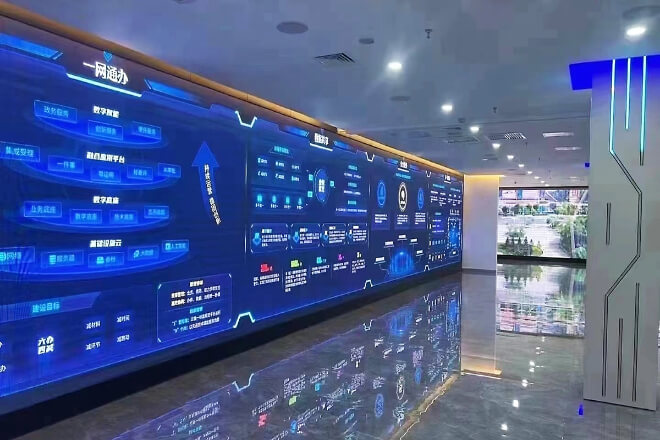
1). 点距:
The dot pitch is the distance between the lamp beads. Imagine that you have a bunch of small light bulbs. The closer the distance between them, the more delicate the screen will look.
For example, the distance between the lamp beads of a P2.5 screen is 2.5 mm, and the picture is as clear as a high-definition photo.
While the distance between the lamp beads of a P3.0 screen is 3.0 mm, and the picture is not as clear.
If you are watching at a close distance, such as a conference room or exhibition hall, the P2.5 screen is better.
But if you are watching outdoors or at a distance, the P3.0 screen is also completely sufficient and cheaper.
2). 刷新率:
The refresh rate is the number of times the screen updates the picture per second. Imagine that when watching a video, if the picture is not updated fast enough, there will be ghosting or flickering.
The refresh rate of an ordinary LED screen may be around 1,000 times per second, while a high-end screen can reach 3,000 times or even higher.
A high refresh rate screen looks smoother, especially when playing fast-moving images, such as sports events or advertising videos, the picture will not be blurred and will look more comfortable.
3). Brightness and grayscale:
Brightness is how bright the screen is. For example, outdoors, the sun is strong, the screen needs to be brighter to see clearly, and may require 5000 nits (nit is a unit of brightness).
Indoors, a screen brightness of 300-1000 nits is enough. Grayscale determines the color level and details of the picture.
The higher the grayscale level, the more natural the color transition of the picture and the richer the details.
For example, compared with a 16-bit grayscale screen, an 8-bit grayscale screen can show more delicate color changes, and the picture looks more realistic.
4). HDR display and high refresh image quality optimization:
Some high-end LED screens now support HDR display. HDR means “high dynamic range”.
Which can make the bright part of the picture brighter and the dark part darker, while retaining more details.
For example, when playing movies or high-quality advertisements, an HDR display can make the picture more layered and the colors more vivid.
High refresh image quality optimization makes the picture smoother and clearer by increasing the refresh rate of the screen and optimizing the algorithm.
Although these functions are invisible and intangible, the effect is very obvious when used.
5). Driver IC:
The driver IC is a key component of the LED screen. Although it is not conspicuous, it plays a significant role.
A good driver IC can ensure the stability of the current of the lamp beads, making the screen display more uniform, without flickering or inconsistent brightness.
For example, some high-end driver ICs support high refresh rates and high grayscale, which can keep the screen stable at high brightness.
Cheap driver ICs may easily flicker or die at high refresh rates, affecting the service life.
In short, although these parameters sound a bit complicated, they directly affect the effect and price of the screen.
When purchasing, users should not only look at the price, but also pay attention to these parameter configurations, so that they can buy an LED screen that really suits their needs.
Reason 5: The value behind after-sales service and warranty period
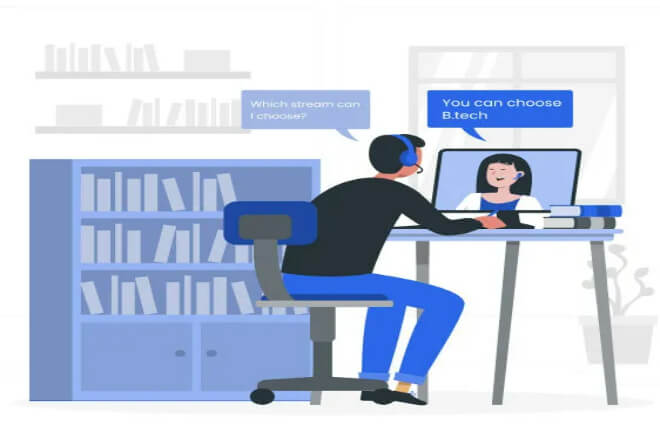
1). Warranty period:
The length of the warranty period of a regular manufacturer can actually show how confident the manufacturer is in its products.
For example, if the warranty period is only one year, the manufacturer may not be sure, and the quality may be a little bit worse.
If the warranty can be up to 3 years or even 5 years, it means that the manufacturer is very confident in its products, and the quality is definitely more reliable.
For example, some big brands dare to promise a 5-year warranty, which is like a “guarantee” for their products, and consumers can use them with more confidence.
2).售后服务:
Let’s take a look at the content of after-sales service. Some manufacturers support a nationwide warranty.
No matter where you buy it, you can find a place to repair it if there is a problem, which is very convenient.
Some manufacturers can also remotely debug. If there is a problem with the screen, just make a phone call, and the technicians can fix it remotely, saving time and effort.
If you encounter complex problems, on-site maintenance is also critical. You don’t need to disassemble and assemble it yourself. Professionals can do it, which is more worry-free to use.
3). Project-based vs. fast-selling:
The depth of service of project-based suppliers and fast-selling suppliers is very different. Project-based suppliers.
Such as those doing large-scale commercial displays and outdoor advertising screens, usually provide more comprehensive and in-depth after-sales services.
Because they know that once these screens have problems, the impact is great, so they will arrange special personnel to follow up, perform regular maintenance, and solve problems in time.
Fast-selling suppliers may focus more on selling goods, and after-sales service is relatively simple, mainly relying on customers to solve the problem themselves, and door-to-door service may not be so timely.
In short, when buying LED screens, don’t just look at the price and function; warranty and after-sales service are also critical.
Long warranty period and perfect after-sales service make you feel at ease when using it, and you don’t have to worry about problems.
七、结论
When choosing an LED screen, you can’t just look at the appearance and price, but also look at the “invisible hard power” such as lamp beads, power supply, system, and after-sales service.
After all, buying cheap and using it badly is far more regrettable than paying more at the beginning. If you are still not sure how to choose, don’t hesitate, find a professional and let the screen really work for you.
最后,如果你想了解更多关于LED显示屏的信息, 请与我们联系。
您可能感兴趣的文章:
